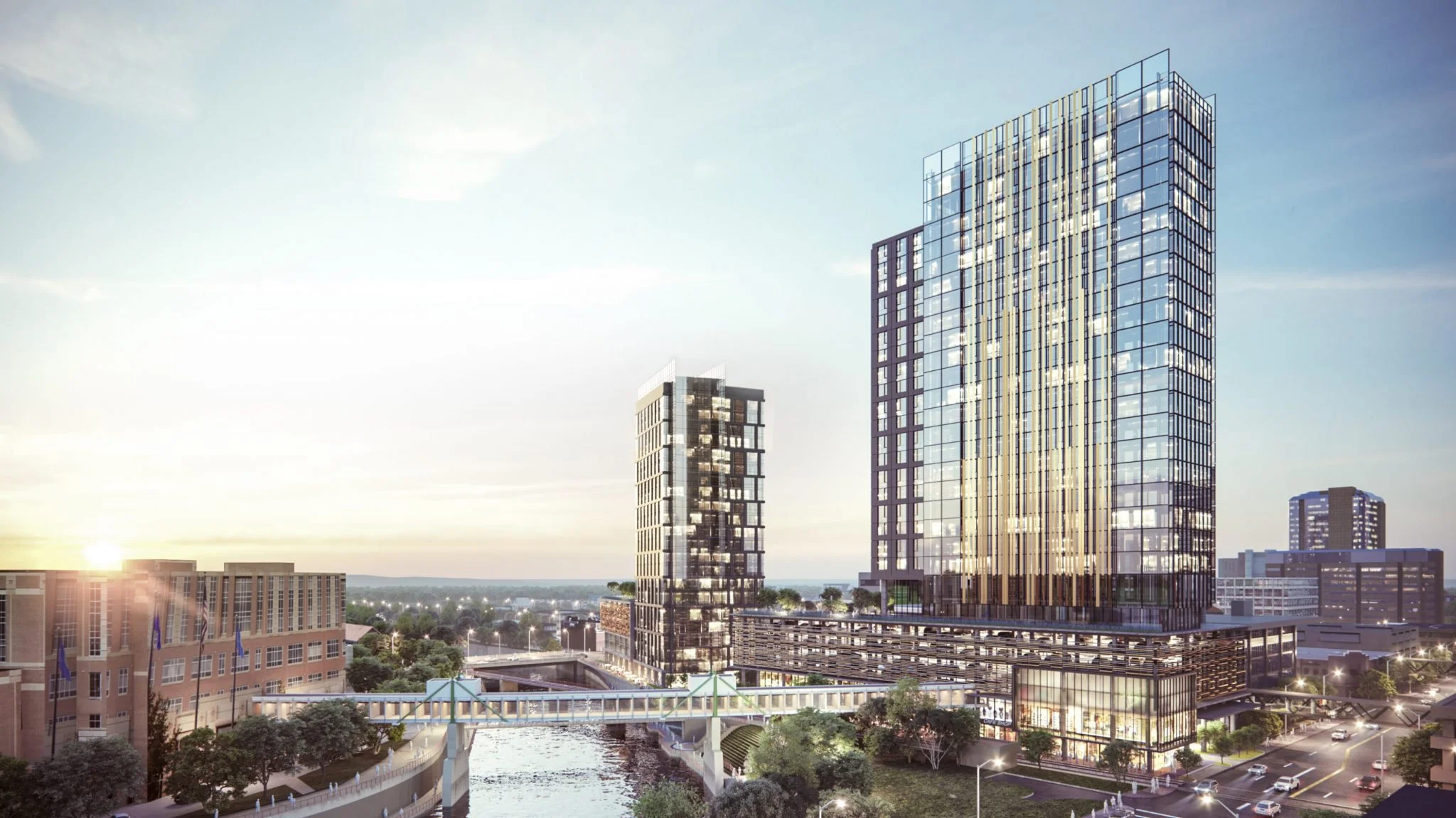Bloom asking for $20 million in public assistance for waterfront development
Bloom International Realty is requesting $20 million in public assistance to help finance its proposed waterfront development in downtown Rochester.
The request for funding was submitted to the city and Destination Medical Center in February. The 235-page application was released to the Med City Beat Tuesday in accordance with the Minnesota Data Practices Act.
Bloom has plans to build a multi-use development anchored by two towers along the west side of the Zumbro River. The nearly 1 million square-foot complex would include a hotel, condominiums and senior housing.
The proposal received its first sign of public support last month when the city's Planning and Zoning Commission voted 5-1 to recommend approval of the project's preliminary development plan. (The commission is not responsible for making decisions regarding funding requests.)
For the project to move ahead, though, the Abu Dhabi-based developer is banking on what would be the highest TIF amount approved by the city since DMC was adopted. In its request for funding, Bloom says the project is not feasible without the public financing that is being requested.
“The TIF funding is required to build a quality asset that incorporates activated streetscape, public amenities, commercial, retail, residential, hospitality, public car parking and connectivity to existing and future surround precinct developments," Blooms writes in the application.
TIF is a tool often used by local governments to help incentivize economic development that aligns with the city's strategic goals. It works by taking the increased tax revenues created by a new development and using them for some form of public benefit (you can read a full explanation here).
Rendering of the project by the architectural firm AE7
In the case of the Bloom project, the funding would help support the inclusion of public amenities, such as a plaza along Third Street, a boardwalk along the river, new parking facilities and improved landscaping.
As the application states: “The project was designed with the intent of activating the waterfront and making the boardwalk a vibrant pedestrian friendly environment. The project’s mixed uses along the waterfront will bring a vibrancy and vitality to the downtown that is currently lacking.”
Bloom notes that these infrastructure improvements would also help support future developments along the river. The downtown waterfront was one of six areas of focus outlined in the initial DMC development plan.
Under the DMC legislation, the city is required to contribute $128 million to the initiative. Any TIF assistance it awards within the DMC district counts toward that commitment. So far, four DMC projects — including the Alatus and Hilton developments — have received TIF funding.
What's next?
The Rochester City Council will hold its first public hearing on the proposal on Monday, March 19 (last night's hearing was postponed due to snow). The DMC Corporation Board will take up the project three days later. Both meetings will focus on the preliminary development plan, not on the financing request; that will require a separate public hearing later on.
Meantime, Bloom is still working with the city to finalize a purchase agreement for the properties it intends to build on. The land, all of which is owned by the city, extends from Second Street SE down to Fourth Street SE. Bloom has had exclusive negotiating rights on the land since 2015.
If approved, Bloom could begin construction on the first phase of the project as early as June. It estimates the initial tower — consisting of senior housing and retail — could be completed by January 2021, while the second tower — the hotel, condos and more retail — could be up by early 2023.
Overall, Bloom estimates the project would require approximately $256.7 million in financing to complete. The $20 million in TIF assistance would represent about 7.8 percent of total development costs.
Project Overview
- 215 units of senior housing, including assisted living, memory care and independent living units
- Four-star hotel with 181 rooms
- 132 condominiums, with a mix of 1, 2 and 3-bedrooms
- Public amenities like an ice skating rink, boardwalk and rooftop park
- 498 total parking spots, including 228 city-owned spaces
- Combined 37,000 square feet of retail and restaurant space
Follow Sean on Twitter.









